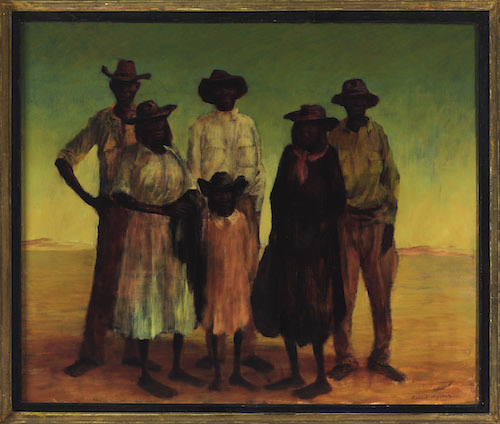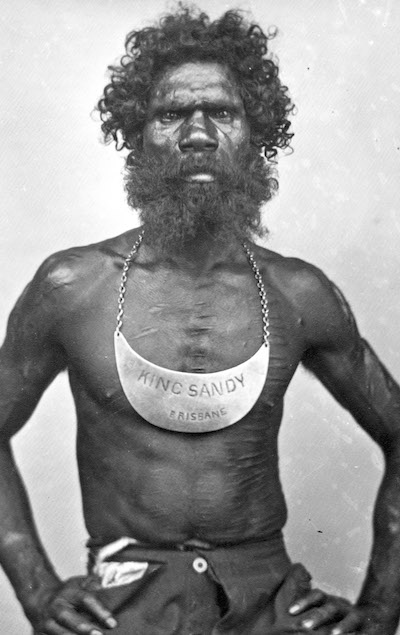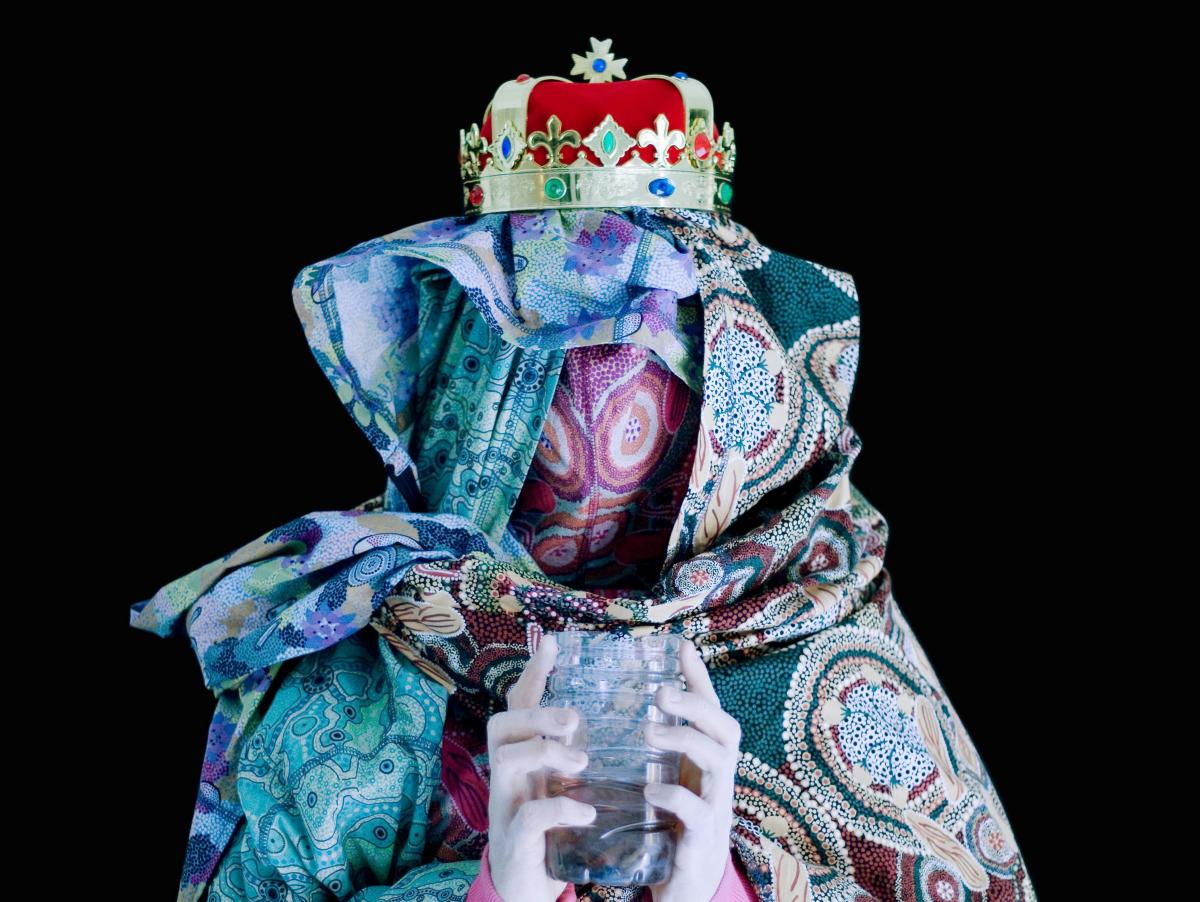Christian Thompson’s King Billy (detail). Image supplied.
From the first portraits of Aboriginal people in Queensland, to recent works by contemporary artists, Queen’s Land: Blak Portraiture explores and interrogates the dominant colonial stereotypes that have dictated the representation of Aboriginal people in the past.
The exhibition seeks to form new narratives around perception and presentation of black identity not only in Queensland but across Australia. The exhibition includes portraits by leading Indigenous and non-Indigenous artists to present new discourses around race and identity.
Queen’s Land is an initiative of the Cairns Art Gallery and is presented in partnership with the Cairns Indigenous Art Fair.
Gallery Director, Andrea May Churcher explains that she first thought about the concept for the exhibition more than three years ago after attending an international conference in South Africa that explored notions of black representation, gender and politics.
‘Last year the Gallery presented Continental Drift that presented works by contemporary blak/black artists from South Africa and North Australia. Queen’s Land further explores some of the narratives around black identity, but with a focus on Indigenous peoples in Queensland. The issues raised by this exhibition are all part of a much broader global narrative which align with the Gallery’s research interests’, said Ms Churcher.
The exhibition has been developed by the Gallery curatorial team together with Djon Mundine AO, consultant curator and Janina Harding, Artistic Director of Cairns Indigenous Art Fair.

Group of Aboriginal People 1953, Russell Drysdale. Image supplied.
Speaking with Djon Mundine, he explained that development of the exhibition and selection of works have been complex and involved considerable research.
‘Works in the exhibition depict the first meetings and cursory observations of white and black people in Queensland, through to images by the descendants of those people, reflecting on or using early imagery, or recasting that imagery and reinventing it or reinterpreting it,’ said Mundine.
‘The descriptions being given by the coloniser are being rewritten. In fact, most of the time a lot of the early photographs in the exhibition are of anonymous people and they would be called ‘anonymous Aboriginal person’ or ‘anonymous primitive savage’ or whatever, that kind of thing,’ he continued.
‘Queensland is a huge space and over a third of all Aboriginal people live in Queensland. Trying to answer the question of what is the image or identity of a Queensland Aboriginal person is not as easy as you would think. There are many different languages and many different societies to start with. And nowadays there are many different occupations and lifestyles.’

Man wearing breastplate inscribed, King Sandy. Daniel Marquis, Brisbane, 1864-1869. Image supplied.
‘[Queen’s Land] reminds people that all these other people exist. Aboriginal history is Australian history, it’s part of it. We have sought to address this question through original artworks, newspapers, historical photographs, political posters, cartoons, and family photo albums,’ he said.
Mundine also commented on the important location of Cairns Art Gallery as the site for this conversation and the growing significance of the Cairns Indigenous Art Fair and commended the Gallery on its presentation of major exhibitions during CIAF that further explore notions of cultural identity that resonate with global audiences and Indigenous peoples across Australia.
Visit cairnsartgallery.com.au/whats-on/exhibitions/queens-land-blak-portraiture to find out more.





